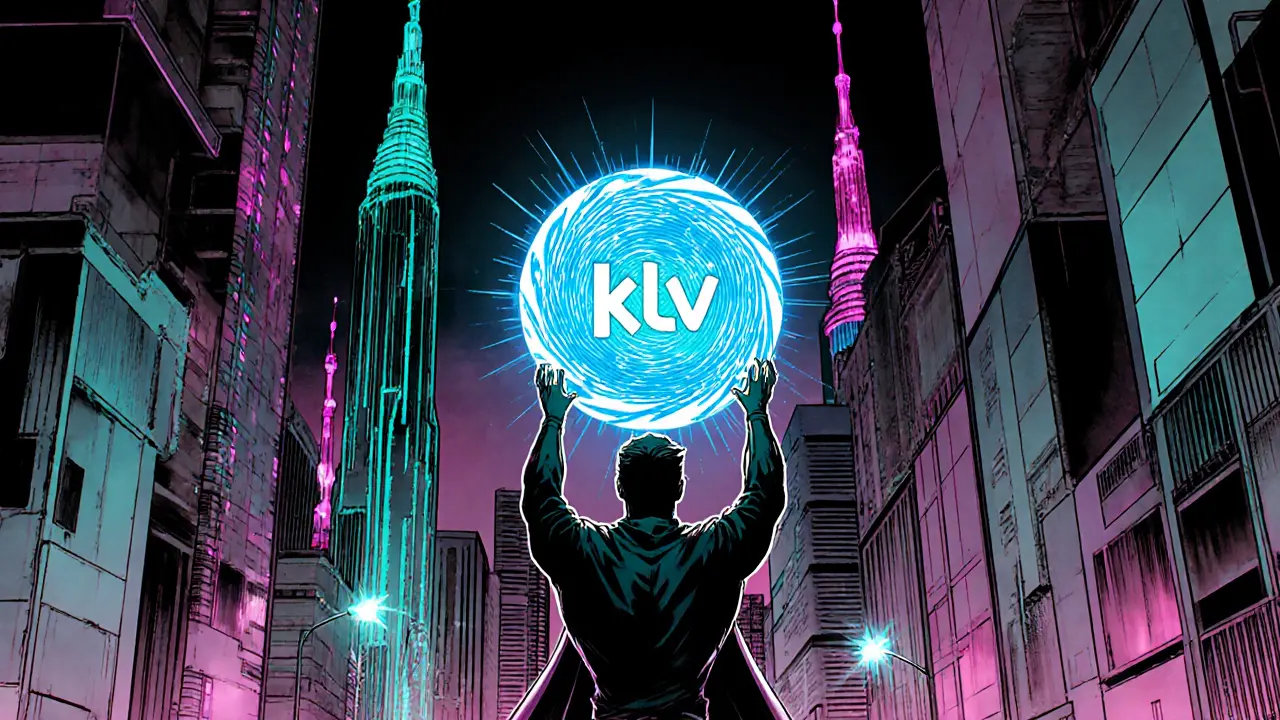What is Klever Coin (KLV) - Complete Overview
Discover what Klever Coin (KLV) is, its tokenomics, staking rewards, ecosystem tools, and how to start using it in this comprehensive guide.
Continue ReadingWhen working with KLV token, a utility cryptocurrency built on the Klever blockchain that powers decentralized finance applications, also known as KLV, you need a clear picture of what it does and why traders care.
Tokenomics of KLV are the backbone of its value proposition. The supply caps at 100 million tokens, with 20 % allocated to community rewards, 15 % to the development fund, and the rest distributed through liquidity mining. Understanding these allocations helps you gauge inflation risk and potential upside, especially when the market reacts to new staking programs.
Liquidity on crypto exchanges determines how easily you can buy or sell KLV. Major platforms like Binance, KuCoin and decentralized venues such as Uniswap V3 list KLV, each offering different fee structures and order‑book depth. Exchange choice directly influences price slippage, so comparing fee tiers and security measures is a must before committing capital.
Occasionally, the KLV project launches airdrops to incentivize early adopters. Recent airdrop campaigns targeted users who held at least 500 KLV in a supported wallet during a snapshot window, rewarding participants with governance tokens that grant voting rights on protocol upgrades. Keeping an eye on official channels ensures you don’t miss these free‑token opportunities.
First, KLV’s consensus mechanism is a hybrid proof‑of‑stake that balances security with low energy consumption. Validators must lock up 10 KLV to earn block rewards, and the reward schedule halves every two years, mirroring Bitcoin’s halving model but on a faster cycle. This design creates a predictable supply curve that analysts often cite when projecting future price movements.
Second, the KLV ecosystem includes a suite of DeFi primitives – lending, yield farming, and cross‑chain bridges. The lending module lets users earn interest by depositing KLV, while borrowers can access liquidity using other assets as collateral. Yield farms reward participants with extra KLV tokens, making the token a central piece of the platform’s incentive structure.
Third, governance plays a real role. Token holders can propose and vote on protocol changes, such as fee adjustments or new bridge integrations. Active governance participation tends to correlate with healthier token health because it signals community commitment and reduces the chance of unilateral, risky upgrades.
Fourth, price volatility is shaped by external market forces. When Bitcoin experiences a rally, KLV often follows due to correlated investor sentiment across crypto assets. Conversely, regulatory announcements—like new exchange compliance rules—can trigger rapid sell‑offs. Monitoring macro trends alongside on‑chain metrics gives you a fuller risk picture.
Finally, security audits are a non‑negotiable factor. The KLV codebase has undergone three independent audits, revealing no critical vulnerabilities but highlighting minor optimization opportunities. Regular audit cycles and transparent bug‑bounty programs help maintain trust and protect user funds.
All these elements—tokenomics, exchange listings, airdrop schedules, consensus design, DeFi utilities, governance, market dynamics, and security—interact to shape KLV’s real‑world performance. By breaking them down, you can build a more accurate valuation model and avoid common pitfalls like chasing hype without checking the underlying fundamentals.
Below you’ll find a curated set of articles that dive deeper into each of these topics. Whether you’re hunting the latest KLV price analysis, comparing exchange fees, or learning how to claim an upcoming airdrop, the collection offers practical tips you can act on right away.

Discover what Klever Coin (KLV) is, its tokenomics, staking rewards, ecosystem tools, and how to start using it in this comprehensive guide.
Continue Reading